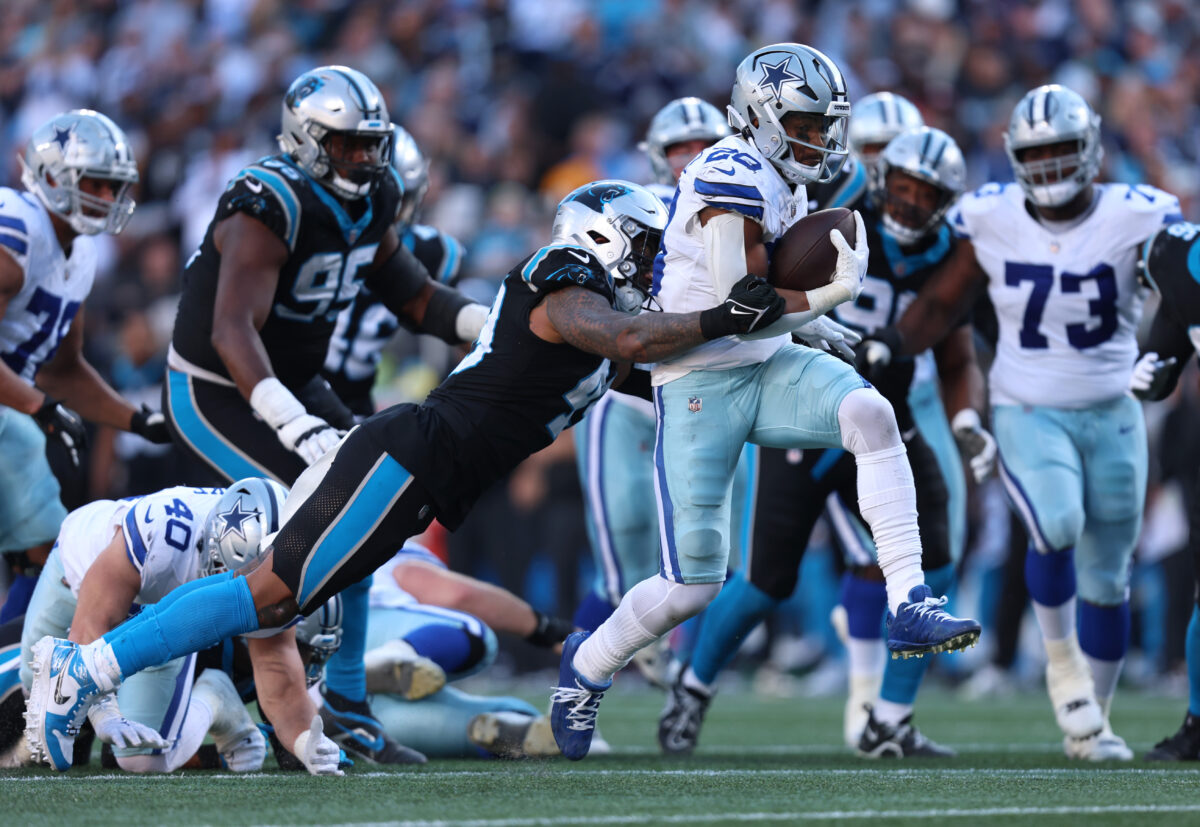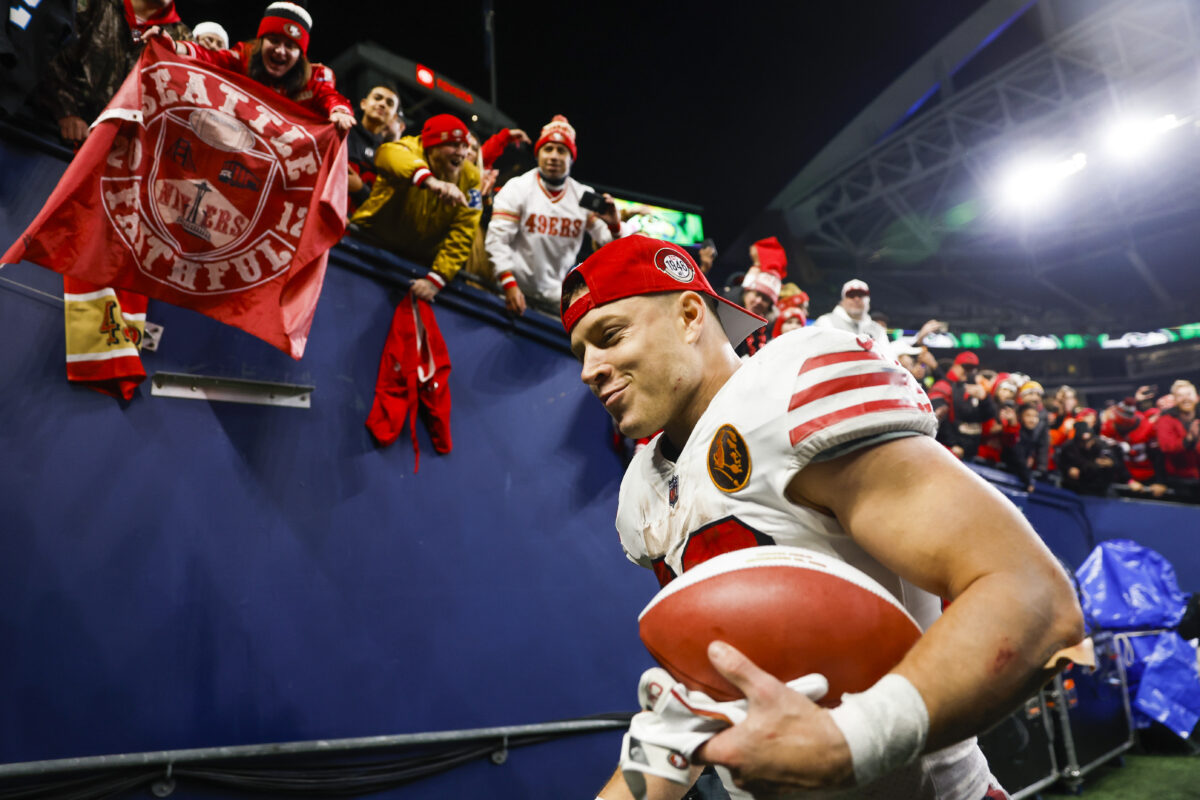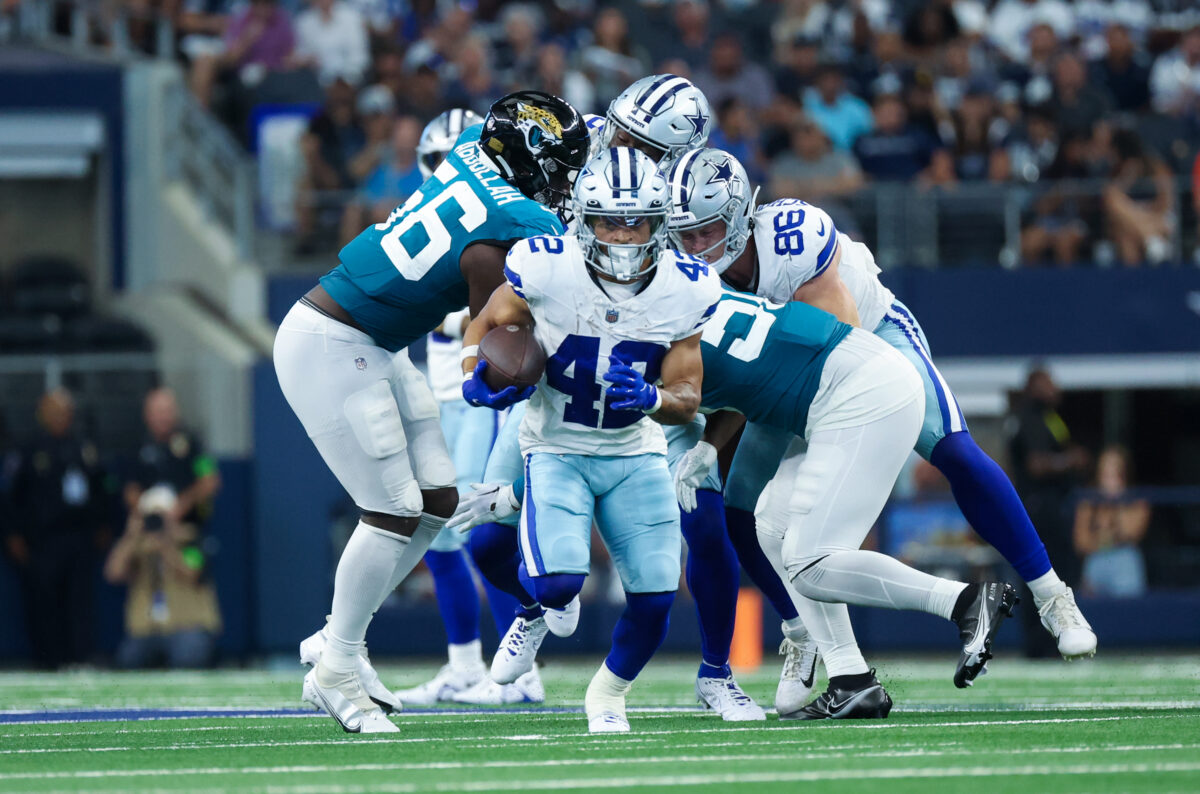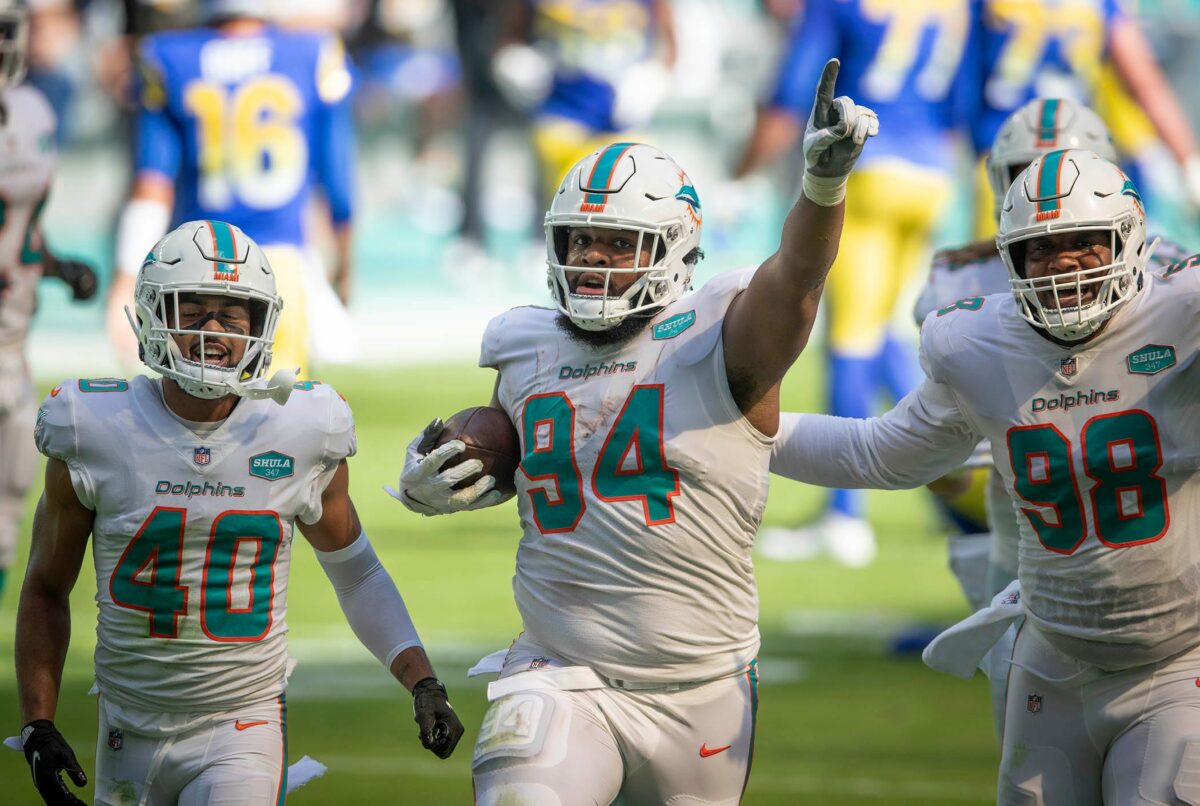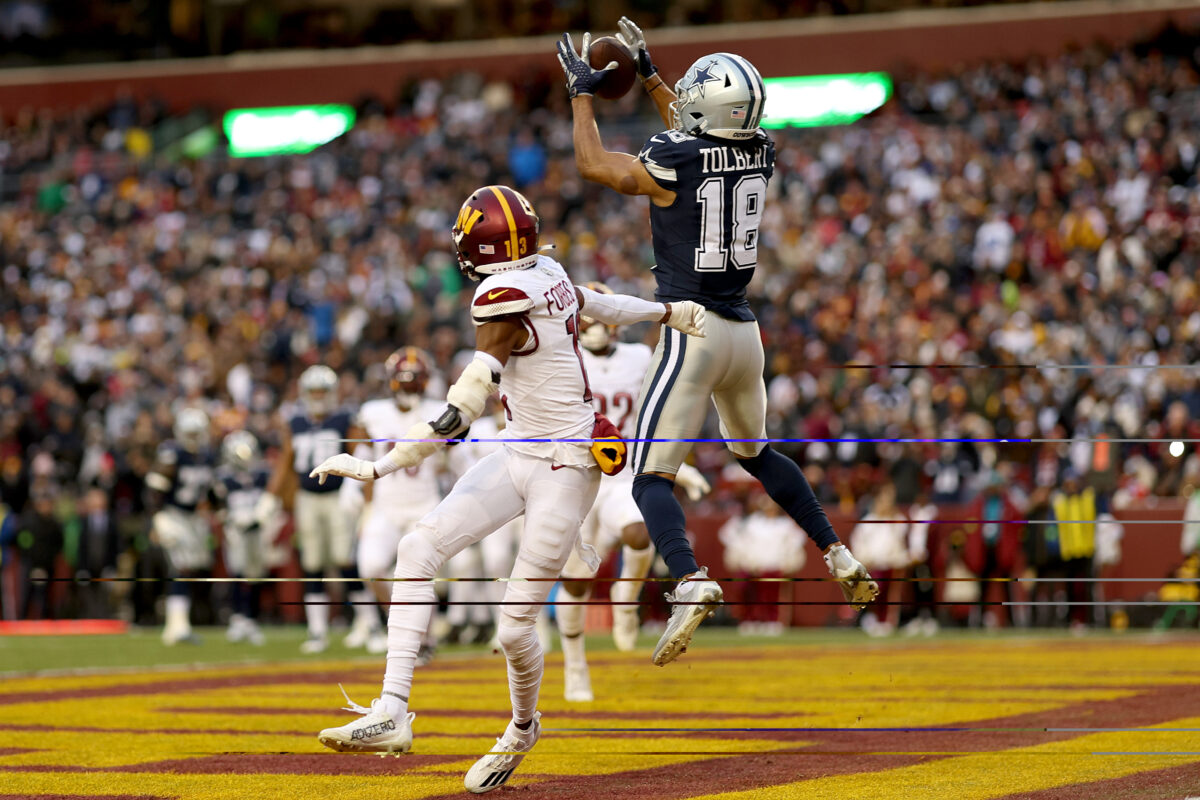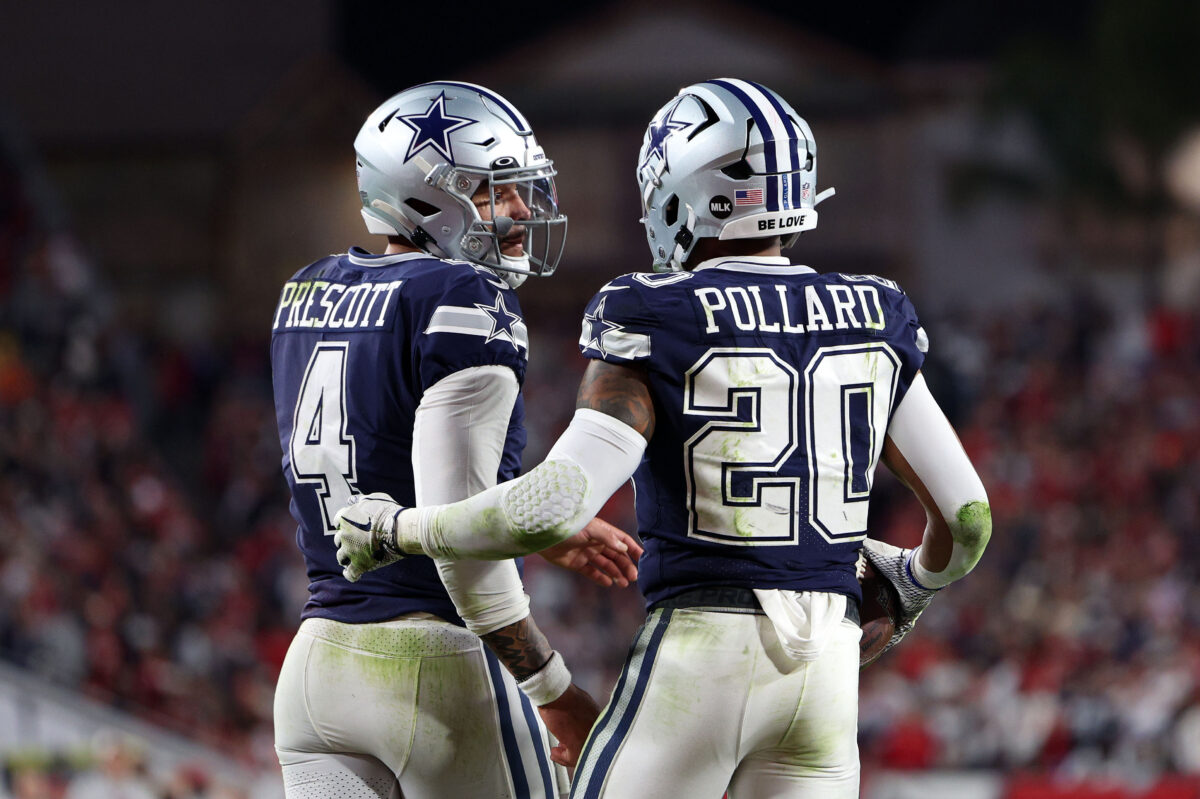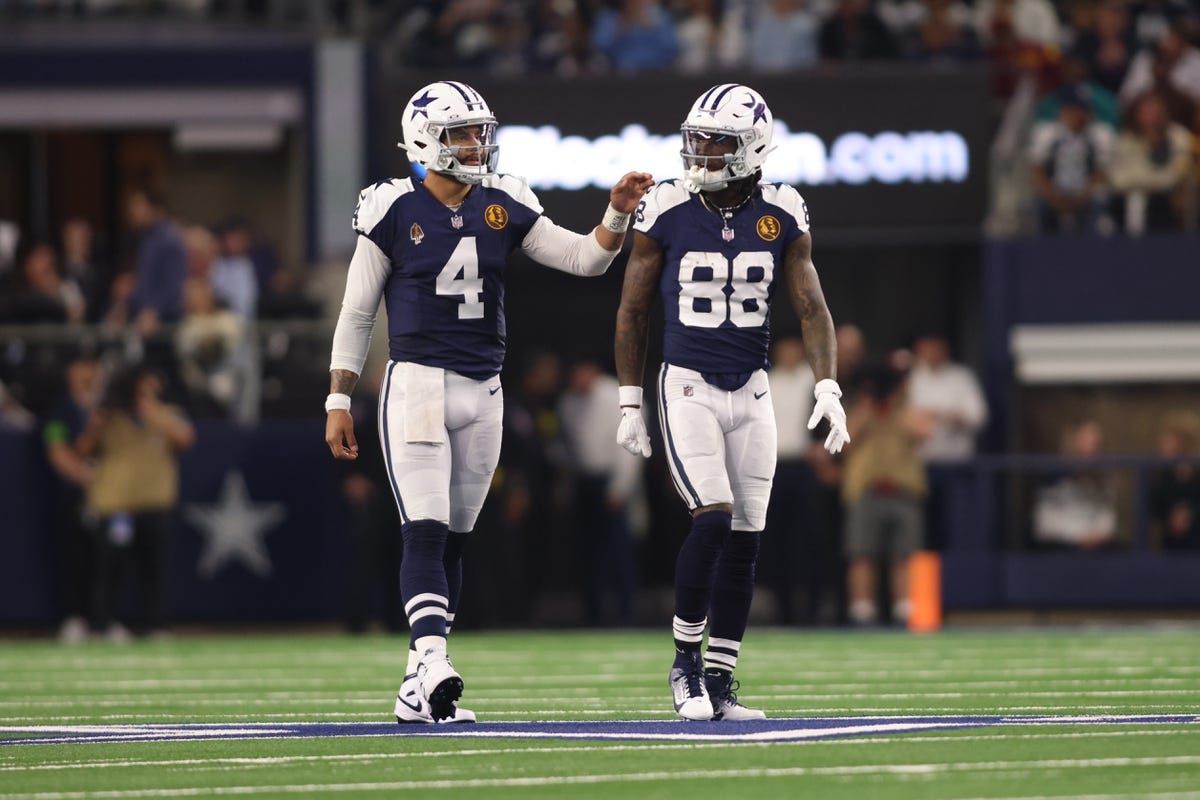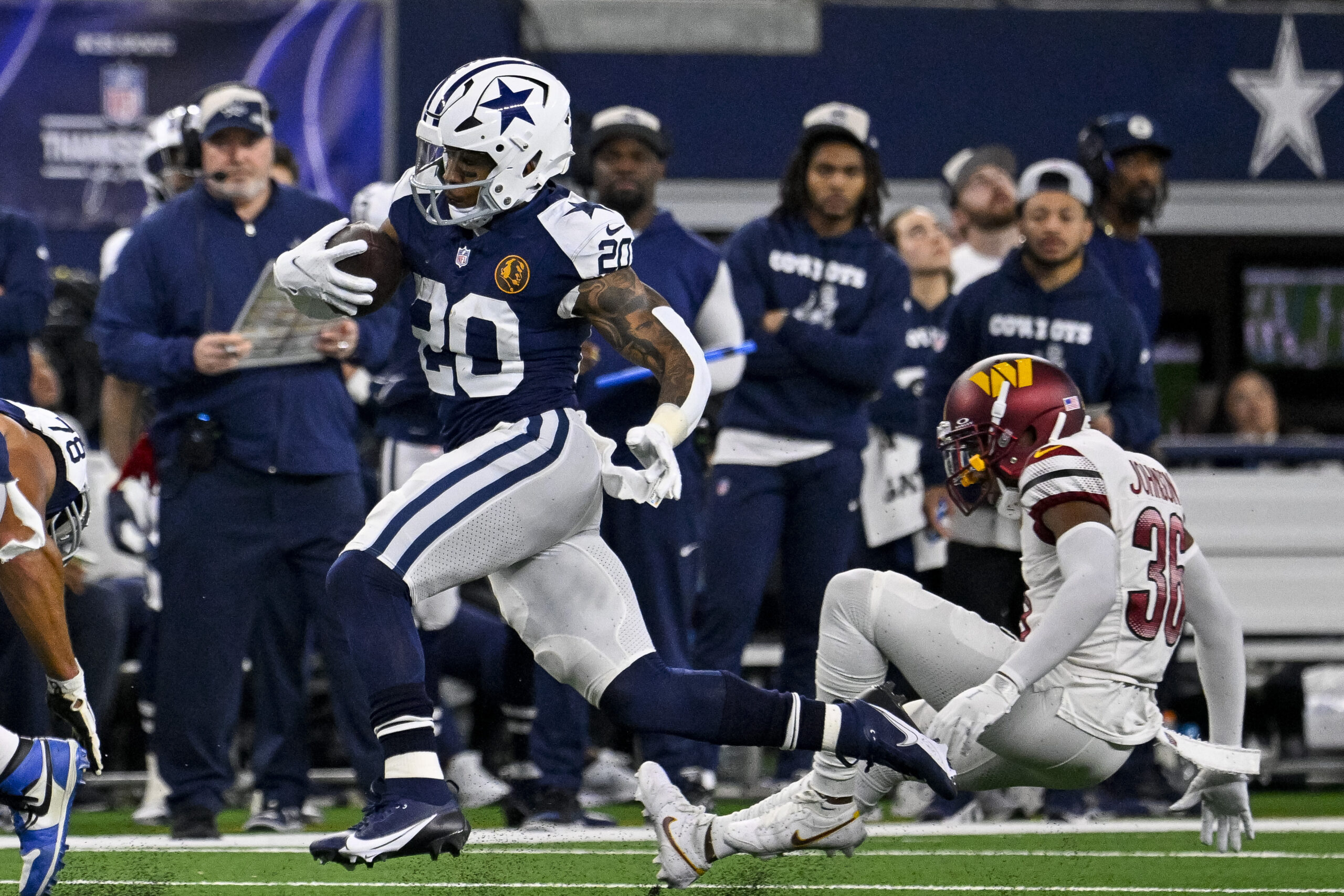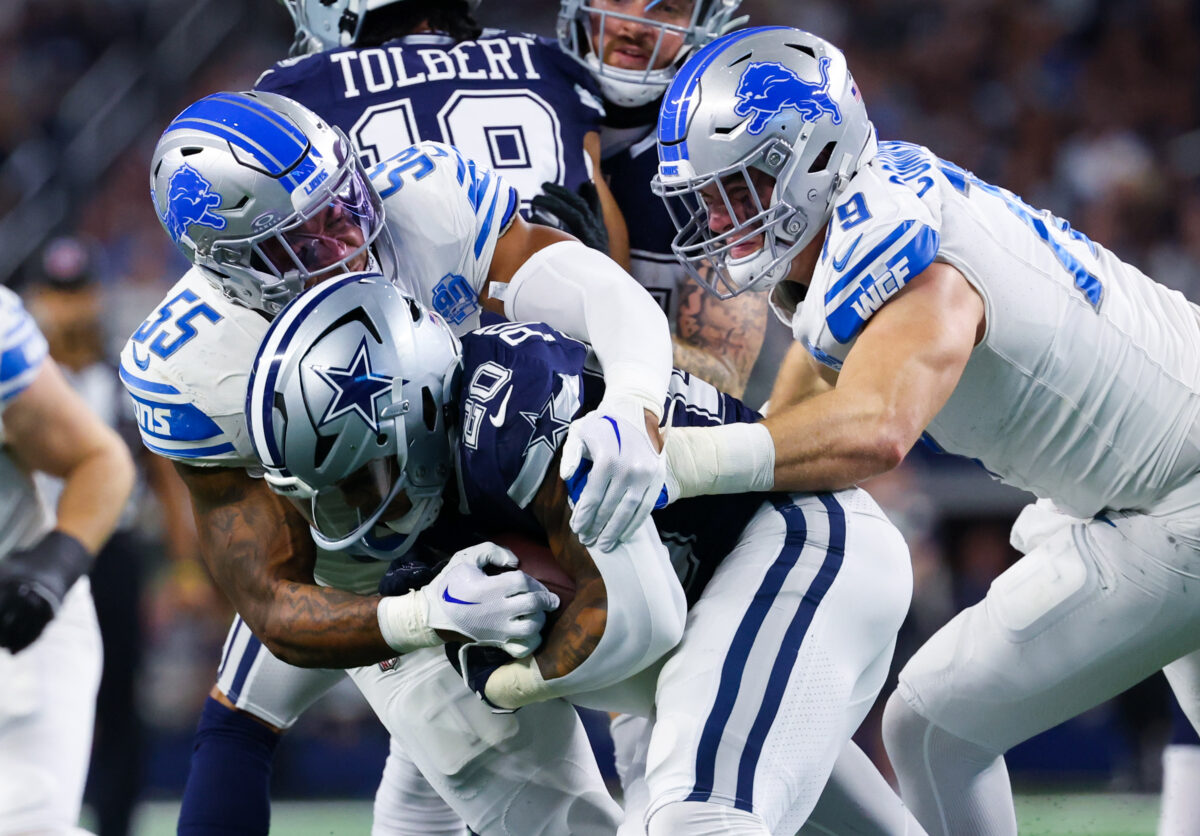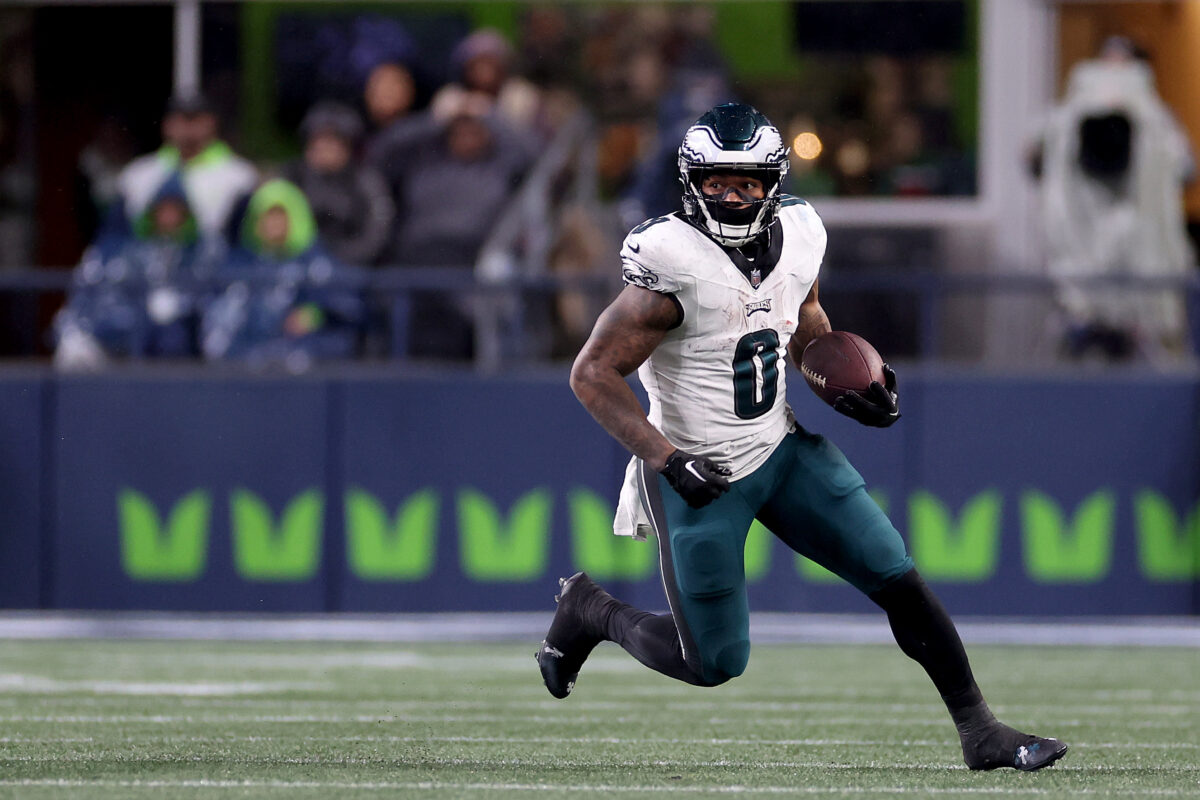The Cowboys’ run game — or lack thereof —was certainly one of the disappointments of the team’s 2023 season. Running back Tony Pollard was set to be the bell cow for the first time after the offseason departure of two-time rushing champ Ezekiel Elliott, and the shifty change-of-pace back would finally get top billing in Dallas’s high-octane offense in Week 1.
But the fifth-year Memphis man was also coming off a brutal lower leg injury sustained less than eight months prior; a fractured fibula and high ankle sprain suffered in the playoff loss to the 49ers. He went on to rack up five yards per carry in the season opener and topped 120 yards a few weeks later against Arizona, but he didn’t resemble the same dynamic runner fans had seen prior to the injury.
Turns out, Pollard didn’t feel the same, either.
Interviewed multiple times during Super Bowl Week, Pollard revealed “The Carolina game is when I probably felt like I was back to my old self.”
The stats, unfortunately, don’t back up that pronouncement.
The Cowboys were already 6-3 coming into that visit to Charlotte. It was Week 11, just four days before Thanksgiving. The season was more than half over. That’s admittedly a long time for the team to have gone without their primary ball carrier feeling like he was 100%.
Dallas had appeared to take offseason precautions to make sure they had backfield depth behind Pollard. They signed veteran Ronald Jones. They drafted the electrifying Deuce Vaughn. Rico Dowdle was once again healthy. Malik Davis waited in the wings.
Jones was dumped immediately after serving a two-game suspension to start the season. The Vaughn experiment was brought to a merciful end after five painful weeks of wasted carries and minimal results. Dowdle saw single-digit carries more games than not. Davis never took a game snap with the offense.
And while Pollard now defines that mid-November Panthers game as a turning point in his season, his numbers in the nine games leading up to that contest and the nine-game span that followed — which includes the postseason — look nearly identical.
| Att | Yds | TDs | Yds/Att | Att/Gm | Yds/Gm | |
| Games 1-9 | 135 | 529 | 2 | 3.92 | 15.0 | 58.8 |
| Games 10-18 | 132 | 532 | 5 | 4.03 | 14.7 | 59.1 |
Perhaps the most troubling figure there is yards per rushing attempt. Consider that Pollard averaged 5.3 yards per carry as a rookie, then 5.5 in 2021, and 5.2 in 2022. His previous season low had been 4.3 in 2020.
Those years all saw Pollard used in combination with Elliott. His first season as Dallas’s clear-cut lead back? Just 4.0 yards per carry.
Pollard may have felt like he was finally “back” starting in Week 11, but in actuality, he produced no differently whatsoever from that point forward, apart from a few extra touchdowns.
He did go on to notch a 1,000-yard season, but under a 17-game schedule, that once-venerated plateau doesn’t have the same mystique. It requires a rather pedestrian 59 yards per game now to hit 1,000; Pollard averaged 59.1, ending up at 1,005. He had more outings with under 40 yards (three) than with over 80 (one).
[affiliatewidget_smgtolocal]
Pollard has said he would like to remain a Cowboy. “If I could choose, I would love to be in Dallas,” he told Blogging the Boys just last week. “But at the end of the day, it is a business. So it is what it is, and you have to be ready for what comes.”
And what’s coming for Pollard is, more than likely, free agency. He played 2023 on a franchise tag, and it’s difficult to imagine the team feels like they got their $10.9 million’s worth.
They may have even been willing to wait through the early part of the season, as he recovered fully from that nasty injury, for him to feel like his old self. Problem is, even once he says he did, he never played like his old self.
[lawrence-auto-related count=3]
[mm-video type=video id=01hpms2qzzafzp5tdd89 playlist_id=01eqbwens7sctqdrqg player_id=none image=https://images2.minutemediacdn.com/image/upload/video/thumbnail/mmplus/01hpms2qzzafzp5tdd89/01hpms2qzzafzp5tdd89-94b6ed13a101bdd5e4f3cd050f522162.jpg]
[lawrence-newsletter]
